Exploring new pathways in endocrine-resistant breast cancer
The most common breast cancer (BC) subtypes are hormone-dependent, being either estrogen receptor-positive (ER
+), progesterone receptor-positive (PR
+), or both, and altogether comprise the luminal subtype. Th
[...] Read more.
The most common breast cancer (BC) subtypes are hormone-dependent, being either estrogen receptor-positive (ER+), progesterone receptor-positive (PR+), or both, and altogether comprise the luminal subtype. The mainstay of treatment for luminal BC is endocrine therapy (ET), which includes several agents that act either directly targeting ER action or suppressing estrogen production. Over the years, ET has proven efficacy in reducing mortality and improving clinical outcomes in metastatic and nonmetastatic BC. However, the development of ET resistance promotes cancer survival and progression and hinders the use of endocrine agents. Several mechanisms implicated in endocrine resistance have now been extensively studied. Based on the current clinical and pre-clinical data, the present article briefly reviews the well-established pathways of ET resistance and continues by focusing on the three most recently uncovered pathways, which may mediate resistance to ET, namely receptor activator of nuclear factor kappa B ligand (RANKL)/receptor activator of nuclear factor kappa B (RANK), nuclear factor kappa B (NFκB), and Notch. It additionally overviews the evidence underlying the approval of combined therapies to overcome ET resistance in BC, while highlighting the relevance of future studies focusing on putative mediators of ET resistance to uncover new therapeutic options for the disease.
Inês Soares de Pinho ... Luís Costa
The most common breast cancer (BC) subtypes are hormone-dependent, being either estrogen receptor-positive (ER+), progesterone receptor-positive (PR+), or both, and altogether comprise the luminal subtype. The mainstay of treatment for luminal BC is endocrine therapy (ET), which includes several agents that act either directly targeting ER action or suppressing estrogen production. Over the years, ET has proven efficacy in reducing mortality and improving clinical outcomes in metastatic and nonmetastatic BC. However, the development of ET resistance promotes cancer survival and progression and hinders the use of endocrine agents. Several mechanisms implicated in endocrine resistance have now been extensively studied. Based on the current clinical and pre-clinical data, the present article briefly reviews the well-established pathways of ET resistance and continues by focusing on the three most recently uncovered pathways, which may mediate resistance to ET, namely receptor activator of nuclear factor kappa B ligand (RANKL)/receptor activator of nuclear factor kappa B (RANK), nuclear factor kappa B (NFκB), and Notch. It additionally overviews the evidence underlying the approval of combined therapies to overcome ET resistance in BC, while highlighting the relevance of future studies focusing on putative mediators of ET resistance to uncover new therapeutic options for the disease.
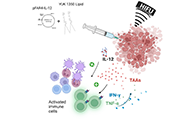 Combination of thermal ablation by focused ultrasound, pFAR4-IL-12 transfection and lipidic adjuvant provide a distal immune responseOpen AccessOriginal ArticleAim: Gene-based immunotherapy against cancer is limited by low gene transfer efficiency. In the literature, interleukin-12 (IL-12) encoding plasmid associated with sonoporation has been shown to en [...] Read more.Hai Doan Do ... Nathalie MignetPublished: June 29, 2022 Explor Target Antitumor Ther. 2022;3:398–413
Combination of thermal ablation by focused ultrasound, pFAR4-IL-12 transfection and lipidic adjuvant provide a distal immune responseOpen AccessOriginal ArticleAim: Gene-based immunotherapy against cancer is limited by low gene transfer efficiency. In the literature, interleukin-12 (IL-12) encoding plasmid associated with sonoporation has been shown to en [...] Read more.Hai Doan Do ... Nathalie MignetPublished: June 29, 2022 Explor Target Antitumor Ther. 2022;3:398–413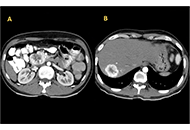 Advanced metastatic pancreatic neuroendocrine tumor treated successfully with peptide receptor radionuclide therapy: a case reportOpen AccessCase ReportNeuroendocrine tumor (NET) is a rare tumor that has been observed in different sites such as lungs and throughout the gastrointestinal tract. Clinical features are usually non-specific and vary cons [...] Read more.Amit Kumar ... Rohit KumarPublished: June 29, 2022 Explor Target Antitumor Ther. 2022;3:392–397
Advanced metastatic pancreatic neuroendocrine tumor treated successfully with peptide receptor radionuclide therapy: a case reportOpen AccessCase ReportNeuroendocrine tumor (NET) is a rare tumor that has been observed in different sites such as lungs and throughout the gastrointestinal tract. Clinical features are usually non-specific and vary cons [...] Read more.Amit Kumar ... Rohit KumarPublished: June 29, 2022 Explor Target Antitumor Ther. 2022;3:392–397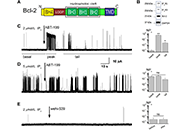 Allosteric cross-talk between the hydrophobic cleft and the BH4 domain of Bcl-2 in control of inositol 1,4,5-trisphosphate receptor activityOpen AccessOriginal ArticleAim: Inositol 1,4,5-trisphosphate receptor (IP3R) is a ubiquitous calcium (Ca2+) channel involved in the regulation of cellular fate and motility. Its modulation by anti-apoptotic prote [...] Read more.George Shapovalov ... Natalia PrevarskayaPublished: June 28, 2022 Explor Target Antitumor Ther. 2022;3:375–391
Allosteric cross-talk between the hydrophobic cleft and the BH4 domain of Bcl-2 in control of inositol 1,4,5-trisphosphate receptor activityOpen AccessOriginal ArticleAim: Inositol 1,4,5-trisphosphate receptor (IP3R) is a ubiquitous calcium (Ca2+) channel involved in the regulation of cellular fate and motility. Its modulation by anti-apoptotic prote [...] Read more.George Shapovalov ... Natalia PrevarskayaPublished: June 28, 2022 Explor Target Antitumor Ther. 2022;3:375–391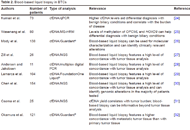 Liquid biopsy in biliary tract cancer from blood and bile samples: current knowledge and future perspectivesOpen AccessReviewBiliary tract cancer (BTC) is an aggressive tumor characterized by a poor prognosis. In the latest years, targetable genetic alterations have been discovered in BTC patients, leading to the approval [...] Read more.Gianluca Arrichiello ... Emilio Francesco GiuntaPublished: June 22, 2022 Explor Target Antitumor Ther. 2022;3:362–374
Liquid biopsy in biliary tract cancer from blood and bile samples: current knowledge and future perspectivesOpen AccessReviewBiliary tract cancer (BTC) is an aggressive tumor characterized by a poor prognosis. In the latest years, targetable genetic alterations have been discovered in BTC patients, leading to the approval [...] Read more.Gianluca Arrichiello ... Emilio Francesco GiuntaPublished: June 22, 2022 Explor Target Antitumor Ther. 2022;3:362–374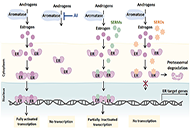 Exploring new pathways in endocrine-resistant breast cancerOpen AccessReviewThe most common breast cancer (BC) subtypes are hormone-dependent, being either estrogen receptor-positive (ER+), progesterone receptor-positive (PR+), or both, and altogether comprise the luminal subtype. Th [...] Read more.Inês Soares de Pinho ... Luís CostaPublished: June 20, 2022 Explor Target Antitumor Ther. 2022;3:337–361
Exploring new pathways in endocrine-resistant breast cancerOpen AccessReviewThe most common breast cancer (BC) subtypes are hormone-dependent, being either estrogen receptor-positive (ER+), progesterone receptor-positive (PR+), or both, and altogether comprise the luminal subtype. Th [...] Read more.Inês Soares de Pinho ... Luís CostaPublished: June 20, 2022 Explor Target Antitumor Ther. 2022;3:337–361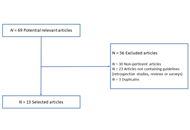 Management of lung cancer patients during COVID-19 pandemic: dos, don’ts and don’t knowsOpen AccessSystematic ReviewAim: During the coronavirus disease 2019 (COVID-19) pandemic two needs have overlapped: on one hand continuing to provide the best care for patients with lung cancer and preventing the spread of the [...] Read more.Mariangela Torniai ... Rossana BerardiPublished: June 10, 2022 Explor Target Antitumor Ther. 2022;3:321–336
Management of lung cancer patients during COVID-19 pandemic: dos, don’ts and don’t knowsOpen AccessSystematic ReviewAim: During the coronavirus disease 2019 (COVID-19) pandemic two needs have overlapped: on one hand continuing to provide the best care for patients with lung cancer and preventing the spread of the [...] Read more.Mariangela Torniai ... Rossana BerardiPublished: June 10, 2022 Explor Target Antitumor Ther. 2022;3:321–336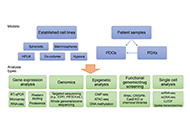 In vitro breast cancer models for studying mechanisms of resistance to endocrine therapyOpen AccessReviewThe development of endocrine resistance is a common reason for the failure of endocrine therapies in hormone receptor-positive breast cancer. This review provides an overview of the different types [...] Read more.Gary J. Cheng ... Dean C. SingletonPublished: June 01, 2022 Explor Target Antitumor Ther. 2022;3:297–320
In vitro breast cancer models for studying mechanisms of resistance to endocrine therapyOpen AccessReviewThe development of endocrine resistance is a common reason for the failure of endocrine therapies in hormone receptor-positive breast cancer. This review provides an overview of the different types [...] Read more.Gary J. Cheng ... Dean C. SingletonPublished: June 01, 2022 Explor Target Antitumor Ther. 2022;3:297–320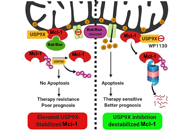 Myeloid cell leukemia-1: a formidable barrier to anticancer therapeutics and the quest of targeting itOpen AccessReviewThe antiapoptotic B cell lymphoma-2 (Bcl-2) family members are apical regulators of the intrinsic pathway of apoptosis that orchestrate mitochondrial outer membrane permeabilization (MOMP) through i [...] Read more.Prasad Sulkshane, Tanuja TeniPublished: May 24, 2022 Explor Target Antitumor Ther. 2022;3:278–296
Myeloid cell leukemia-1: a formidable barrier to anticancer therapeutics and the quest of targeting itOpen AccessReviewThe antiapoptotic B cell lymphoma-2 (Bcl-2) family members are apical regulators of the intrinsic pathway of apoptosis that orchestrate mitochondrial outer membrane permeabilization (MOMP) through i [...] Read more.Prasad Sulkshane, Tanuja TeniPublished: May 24, 2022 Explor Target Antitumor Ther. 2022;3:278–296